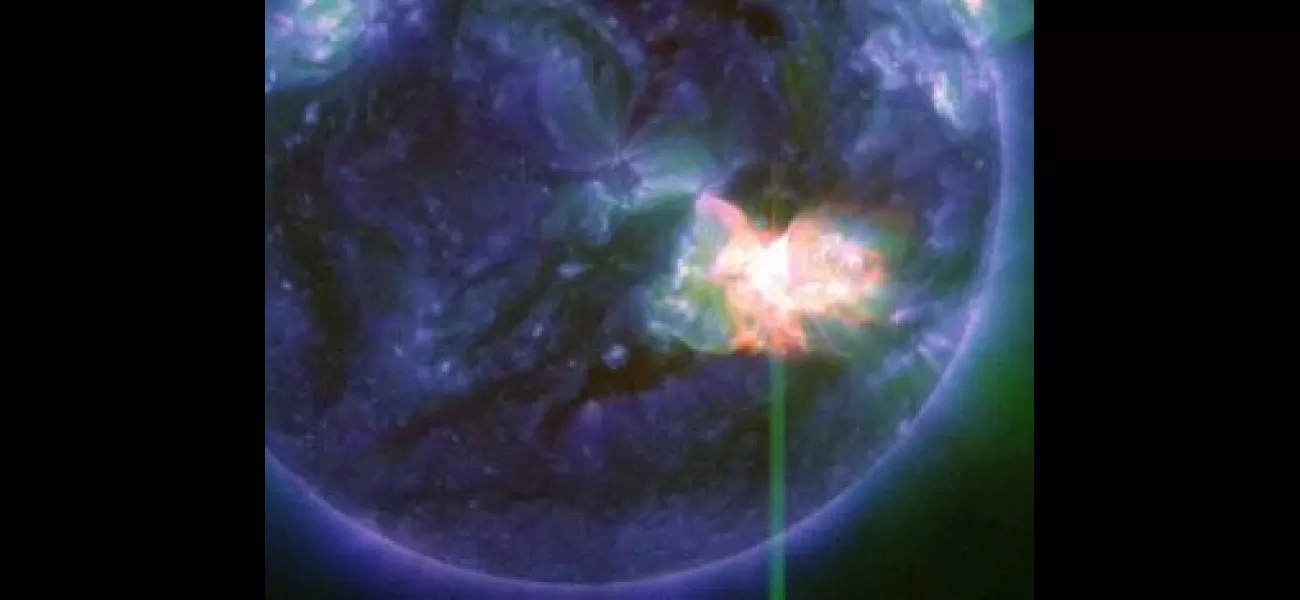A solar storm caused a stunning display of lights around the world, without causing any major issues.
A strong solar storm caused a beautiful light display in the sky and minor disruptions to power, communications, and satellite systems.
May 11th 2024.

Overnight, a spectacular solar storm lit up the sky, captivating viewers across the globe. As expected, the intense storm caused some disruptions to various systems, such as the electric power grid, communications, and satellite positioning. The US National Oceanic and Atmospheric Administration (NOAA) reported that conditions of extreme geomagnetic storming continued into Saturday, with initial reports of irregularities in the power grid, degradation of high-frequency communications, and GPS systems.
However, the Federal Emergency Management Agency (FEMA) reassured the public that as of early Saturday morning, no significant impacts had been reported in any FEMA region. Despite the ongoing strong flares predicted by NOAA through Sunday, the agency's Space Weather Prediction Centre was well-prepared for the storm.
On Saturday morning, SpaceX's Starlink satellite internet service noted a degradation in service and announced that their team was investigating the cause. CEO Elon Musk also shared updates on Twitter, stating that their satellites were "under a lot of pressure" but holding up so far.
The Northern Lights, a stunning display of purple, green, yellow, and pink hues, were seen around the world, from Germany and Switzerland to London, Prague, and Barcelona. In the US, the storm pushed the lights further south than usual, allowing people in states like Kansas, Nebraska, Iowa, and Michigan to capture breathtaking photos of the colorful horizon.
NOAA confirmed that the solar storm would continue throughout the weekend, offering another opportunity for viewers to witness the Northern Lights on Saturday night. The agency issued a rare severe geomagnetic storm warning on Friday when the solar outburst arrived earlier than expected.
NOAA alerted operators of power plants, spacecraft, and FEMA to take necessary precautions. According to Rob Steenburgh, a scientist at NOAA's Space Weather Prediction Centre, most people on Earth would not be affected by the storm. In fact, he described the Northern Lights as a "gift from space weather."
Steenburgh also recommended capturing photos of the sky to get a better view of the aurora, as phone cameras are more equipped to capture light than the naked eye. Mike Bettwy, operations chief for the prediction centre, added that even after the storm passes, there may still be some disruptions in signals between GPS satellites and ground receivers.
The potential impact of the storm on high-voltage transmission lines for power grids was also addressed. NOAA space weather forecaster Shawn Dahl explained that while these lines are at risk, the electrical lines in people's homes are not. However, satellites and their disruptions can still have an effect on navigation and communication services on Earth.
In 2003, an extreme geomagnetic storm caused power outages in Sweden and damaged power transformers in South Africa. Similarly, the current storm poses a risk, and even after it has passed, there may still be some disruptions in signals between GPS satellites and ground receivers. However, NOAA reassures that with the numerous navigation satellites in orbit, any outages should be brief.
The sun has been particularly active since Wednesday, producing several solar flares and outbursts of plasma. Each eruption, known as a coronal mass ejection, contains massive amounts of plasma and magnetic field from the sun's outer atmosphere. These flares are believed to be linked to a giant sunspot, approximately 16 times the size of Earth. This increase in solar activity is expected as the sun approaches the peak of its 11-year cycle.
Overall, while the solar storm has caused some disruptions, it has also gifted us with the awe-inspiring Northern Lights. As the storm continues throughout the weekend, experts urge viewers to capture photos and enjoy the show while taking necessary precautions for potential disruptions.
However, the Federal Emergency Management Agency (FEMA) reassured the public that as of early Saturday morning, no significant impacts had been reported in any FEMA region. Despite the ongoing strong flares predicted by NOAA through Sunday, the agency's Space Weather Prediction Centre was well-prepared for the storm.
On Saturday morning, SpaceX's Starlink satellite internet service noted a degradation in service and announced that their team was investigating the cause. CEO Elon Musk also shared updates on Twitter, stating that their satellites were "under a lot of pressure" but holding up so far.
The Northern Lights, a stunning display of purple, green, yellow, and pink hues, were seen around the world, from Germany and Switzerland to London, Prague, and Barcelona. In the US, the storm pushed the lights further south than usual, allowing people in states like Kansas, Nebraska, Iowa, and Michigan to capture breathtaking photos of the colorful horizon.
NOAA confirmed that the solar storm would continue throughout the weekend, offering another opportunity for viewers to witness the Northern Lights on Saturday night. The agency issued a rare severe geomagnetic storm warning on Friday when the solar outburst arrived earlier than expected.
NOAA alerted operators of power plants, spacecraft, and FEMA to take necessary precautions. According to Rob Steenburgh, a scientist at NOAA's Space Weather Prediction Centre, most people on Earth would not be affected by the storm. In fact, he described the Northern Lights as a "gift from space weather."
Steenburgh also recommended capturing photos of the sky to get a better view of the aurora, as phone cameras are more equipped to capture light than the naked eye. Mike Bettwy, operations chief for the prediction centre, added that even after the storm passes, there may still be some disruptions in signals between GPS satellites and ground receivers.
The potential impact of the storm on high-voltage transmission lines for power grids was also addressed. NOAA space weather forecaster Shawn Dahl explained that while these lines are at risk, the electrical lines in people's homes are not. However, satellites and their disruptions can still have an effect on navigation and communication services on Earth.
In 2003, an extreme geomagnetic storm caused power outages in Sweden and damaged power transformers in South Africa. Similarly, the current storm poses a risk, and even after it has passed, there may still be some disruptions in signals between GPS satellites and ground receivers. However, NOAA reassures that with the numerous navigation satellites in orbit, any outages should be brief.
The sun has been particularly active since Wednesday, producing several solar flares and outbursts of plasma. Each eruption, known as a coronal mass ejection, contains massive amounts of plasma and magnetic field from the sun's outer atmosphere. These flares are believed to be linked to a giant sunspot, approximately 16 times the size of Earth. This increase in solar activity is expected as the sun approaches the peak of its 11-year cycle.
Overall, while the solar storm has caused some disruptions, it has also gifted us with the awe-inspiring Northern Lights. As the storm continues throughout the weekend, experts urge viewers to capture photos and enjoy the show while taking necessary precautions for potential disruptions.
[This article has been trending online recently and has been generated with AI. Your feed is customized.]
[Generative AI is experimental.]
0
0
Submit Comment





